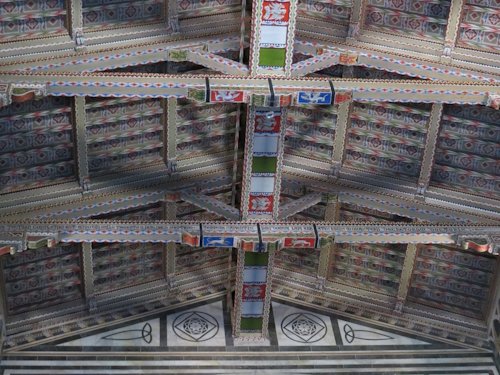First published: Sun 29 Oct 2023.
Els Slots
Minor Boundary Modifications
Comments
9 comments
Solivagant
2 years, 1 month ago (Oct 29, 2023)
Interesting and useful extra info.
But I hate "losing" knowledge ... is it too late to at least keep the other previous buffer zone related connections as a list even if not as their own "connection".
Another thought...are there any "extensions" which were first proposed as simple "minor modifications"? You indicate that "all" proposed "minor modifications" have got through "on the nod" so, maybe not, or IUCN/ICOMOS stopped that approach before it reached the WHC/
Reply
Liam
2 years, 1 month ago (Oct 29, 2023)
Were there any serious discussions at the time about approving Minor Boundary Modifications which removed chunks of the core zone because of economic development (Humberstone / Ivrea / Selous)?
Just wondering whether Liverpool ever sought a MBM to remove the Bramley Moore docks which were after all only in buffer zone. Rather than both sides progressing inflexibly.
Els Slots
2 years, 1 month ago (Oct 29, 2023)
@Liam - For Selous there must have been, as the decision taken at the WHC was different from the IUCN advice. But a MBM like this doesn't come out of nowhere, in the case of Selous there was also a possible in Danger listing being discussed because of the mining concession.
Solivagant
2 years, 1 month ago (Oct 29, 2023)
A sense of the discussions which must have taken place regarding the Selous boundary modification can be gained from the report of the St Petersburg WHC.... This was the final conclusion, hedged with numerous requirements and requests!.. "Decides in an exceptional and unique manner to approve the proposed boundary modification of the Selous Game Reserve, United Republic of Tanzania; "
We don't of course know who argued what in those pre Live Stream days
Meltwaterfalls
2 years, 1 month ago (Oct 29, 2023)
I’m just wondering if Westminster is mislabelled, the boundary change seems to have just included the road between the Abbey and the Houses of Parliament, I can’t really see what previously inscribed part has been removed
Ian Cade
2 years, 1 month ago (Oct 30, 2023)
<i>Just wondering whether Liverpool ever sought a MBM to remove the Bramley Moore docks which were after all only in buffer zone.</i>
Just had to double check but Bramley Moore Dock was actually in the core zone, which I guess is the main thrust of the problem. Perhaps an MBM could've helped it, but after Liverpool Waters I think good will was gone.
Why the derelict docks were included in the core zone originally is probably the root of the problem.
I would imagine that a group with an almost exclusive heritage focus was responsible for drafting the boundaries, and went for an approach that more sites were essential to getting a positive inscription (probably isn't the case, ICOMOS don't even mention Bramley-Moore in their evaluation).
Then after inscription other parts of the city council looked at this massive empty space, and a local enterprise in need of a massive empty space, put 2 and 2 together and got delisting :|
Solivagant
2 years, 1 month ago (Oct 30, 2023)
Re Liam's original question and Meltwaterfalls' subsequent comment.
The best article i have read is titled !What was UNESCO up to in Liverpool" and can be found by searching on that title. It has also been referred to by me on the UK Forum and the same search criteria will find it.
A couple of quotes on the boundary Modification issue -
"What are the main lessons from Liverpool’s loss?
First, draw realistic boundaries. A city is not a
museum. Think very carefully before including derelict and disused areas, where there is
known to be an appetite for major investment"
"World Heritage UK had suggested amending
the boundary of the world heritage site as a
potential way forward, but to no avail. There are many who have the view that the boundary was drawn too widely. It is unclear why amendment of the boundary was not considered by Unesco"



